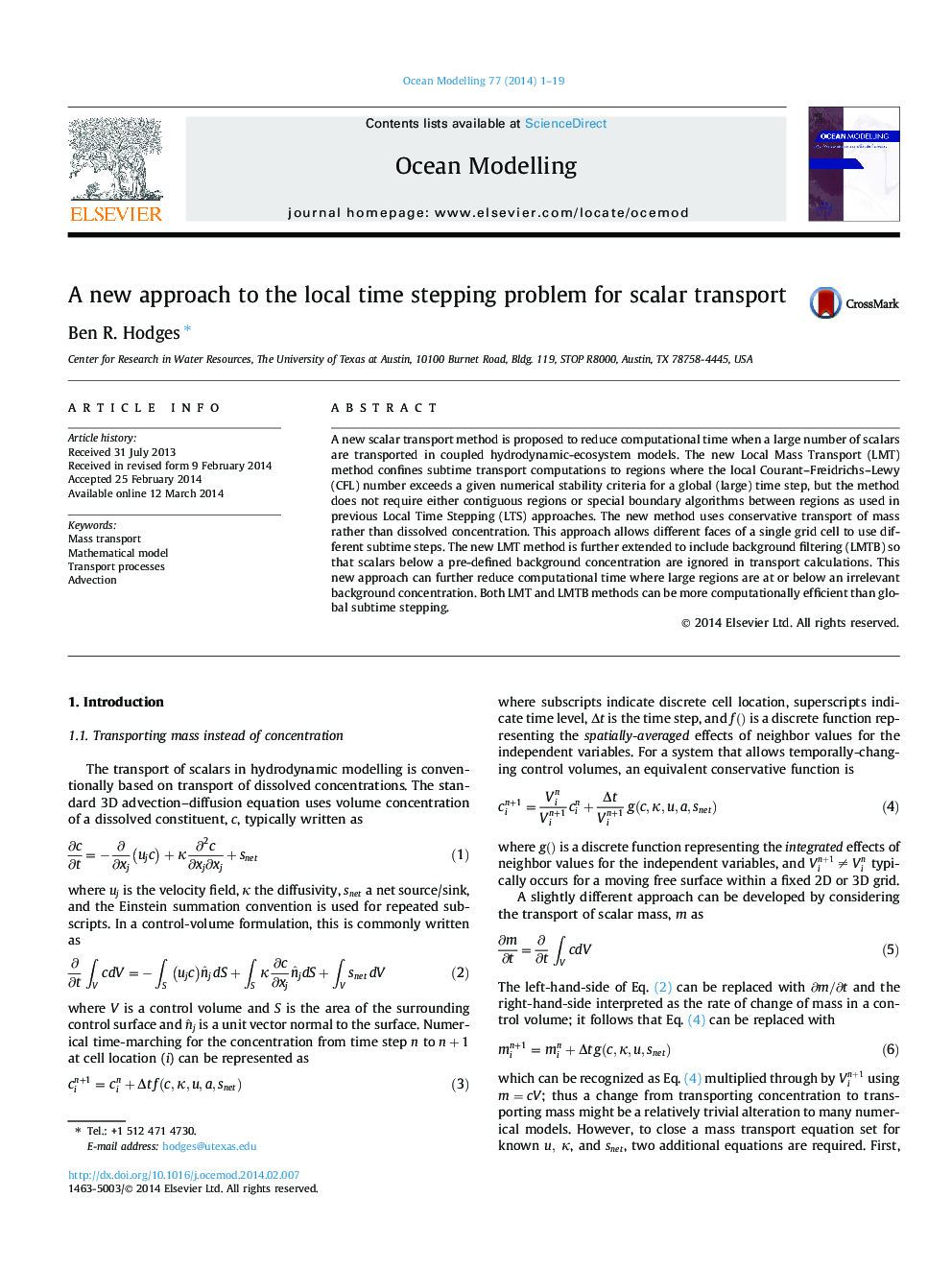| Article ID | Journal | Published Year | Pages | File Type |
|---|---|---|---|---|
| 4552054 | Ocean Modelling | 2014 | 19 Pages |
•Conservative transport of scalars by mass rather than concentration.•Subtime step intervals on different faces of a single grid cell are independent.•Method does not require special algorithms between regions of different time steps.•Background masking removes wasted computational expense of background concentrations.
A new scalar transport method is proposed to reduce computational time when a large number of scalars are transported in coupled hydrodynamic-ecosystem models. The new Local Mass Transport (LMT) method confines subtime transport computations to regions where the local Courant–Freidrichs–Lewy (CFL) number exceeds a given numerical stability criteria for a global (large) time step, but the method does not require either contiguous regions or special boundary algorithms between regions as used in previous Local Time Stepping (LTS) approaches. The new method uses conservative transport of mass rather than dissolved concentration. This approach allows different faces of a single grid cell to use different subtime steps. The new LMT method is further extended to include background filtering (LMTB) so that scalars below a pre-defined background concentration are ignored in transport calculations. This new approach can further reduce computational time where large regions are at or below an irrelevant background concentration. Both LMT and LMTB methods can be more computationally efficient than global subtime stepping.
